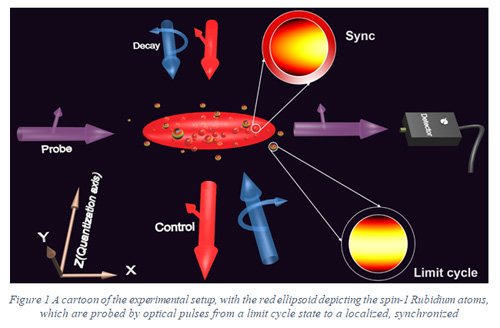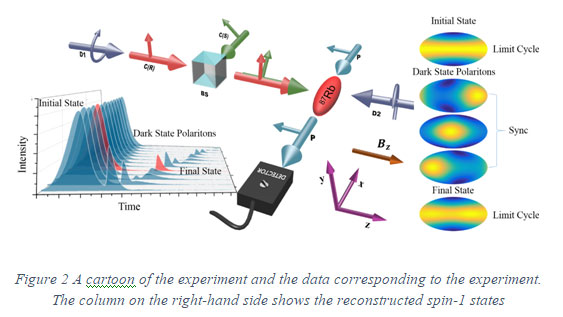 Natural oscillators getting into synchrony with each other is a phenomenon that occurs widely in nature ranging from pendulum clocks, fireflies, flying flocks or swarms of birds and bees evading predators, motor neurons and muscles to larger scales of synchrony in the periodic clapping of hands or of people walking on wobbly bridges. It has also been artificially engineered for technological applications, including wind turbines, satellite clocks, or electrical grid lines.
Natural oscillators getting into synchrony with each other is a phenomenon that occurs widely in nature ranging from pendulum clocks, fireflies, flying flocks or swarms of birds and bees evading predators, motor neurons and muscles to larger scales of synchrony in the periodic clapping of hands or of people walking on wobbly bridges. It has also been artificially engineered for technological applications, including wind turbines, satellite clocks, or electrical grid lines.The quest for a spontaneous synchronization at the atomic scale has led to its first experimental observation by Arif Laskar and his colleagues at IIT Kanpur. The work published in Physical Review Letter can act as a basis for synchronizing quantum networks, for the usage of synchronized quantum probes in sensing and meterology or for searching and understanding new, synchronous collective states.
For the experiment, Laskar and his team used spin-1 atoms that are cooled very close to absolute zero using lasers and magnetic fields. After preparing the atoms in a state that make them natural “oscillators,” they stored a pulse of light in these atoms. Interestingly, the act of storing the light pulse synchronized the atoms to the phases due to applied optical and magnetic fields. They confirmed synchronization by recovering the light pulse from the atoms at a later time and reconstructing the atomic state from the pulse.
 In particular, they found that superposition of waves, a typical quantum effect, can block the synchronization. Such an effect is usually not expected in the classical domain. Furthermore, they found that adding more process that decay in the system, can get it back in synchrony. The work is a major breakthrough since the phenomenon was first observed by Christiaan Huygens in 1665.
In particular, they found that superposition of waves, a typical quantum effect, can block the synchronization. Such an effect is usually not expected in the classical domain. Furthermore, they found that adding more process that decay in the system, can get it back in synchrony. The work is a major breakthrough since the phenomenon was first observed by Christiaan Huygens in 1665.Link to publication: (https://journals.aps.org/prl/pdf/10.1103/PhysRevLett.125.013601)






























